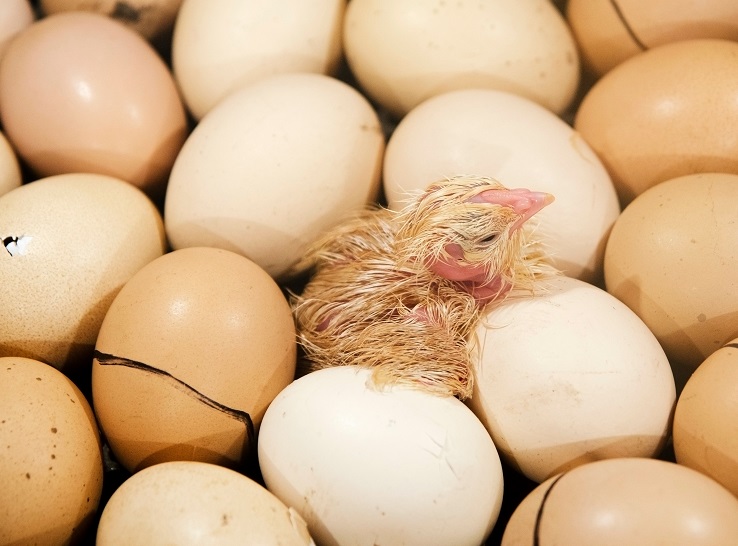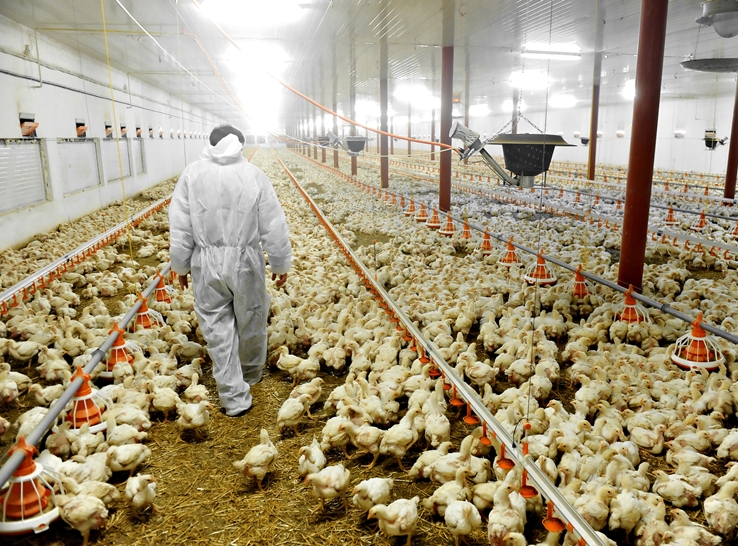A dual case of Mycoplasma gallisepticum and Mycoplasma synoviae in a broiler breeder flock in northeast Georgia exposed expensive biosecurity shortfalls of which producers should take heed, according to experts involved in the outbreak.
Karen Grogan, DVM, MAM, ACPV, clinical professor at the University of Georgia College of Veterinary Medicine, and Kathleen Sary, DVM, MSc, veterinary director at the Georgia Poultry Laboratory Network (GPLN), described the case at the 2024 American Association of Avian Pathologists meeting.
The story began with a sample of two dead and three live 34-week-old Ross 708 hens being sent to the University of Georgia’s College of Veterinary Medicine, with little by way of explanatory notes other than a reference to reovirus and suspected secondary infection.
Grogan observed a mixed presentation of lesions in necropsy, including sternal bursitis, peritonitis and tracheitis.
Grogan’s team took bacterial swabs and cultured Staphylococcus aureus and Escherichia coli from different tissues. Despite the low mortality that had been reported, they conducted surveillance for highly pathogenic avian influenza using quantitative reverse transcription PCR testing, which was negative.
Next, they sent samples for histopathology. Within 2 days, mycoplasmosis was suggested as being highly probable due to the identification of lymphocytic inflammation typical of Mycoplasma infection.
In response, Grogan sent frozen tracheal tissues to the college’s Mycoplasma lab — and this is where positive diagnoses for both M. gallisepticum and M. synoviae were confirmed. She then reported the positives to the poultry company and Louise Dufour-Zavala, DVM, ACPV, at the GPLN.
The company noted they had mycoplasmosis cases previously and their premises were near a backyard flock.
‘Good neighbors’ take strong action
Following internal discussions and with regulatory bodies, the company decided to be “good neighbors” and send the flock to processing after antibiotic treatment and egg disposal, Grogan explained. Because spike males had recently been introduced to the flock and the service person for the farm was covering two routes at the time, they also tested all breeder flocks across the company to ensure they had not unwittingly spread the two pathogens.
Fortunately, they found no additional positives.
Then came an on-site investigation by GPLN, which examined movements in and out of the houses, and possible connections to the backyard flock. The flock owner was very cooperative and agreed to have their birds tested, Sary said.
This investigation resulted in positives for both M. gallisepticum and M. synoviae and an alert to producers within a 2-mile zone.
“What was particularly interesting in this case was that only house 2 was positive for Mycoplasma gallisepticum and Mycoplasma synoviae, and not house 1. House 1 was positive only for Mycoplasma synoviae,” Sary explained.
“When investigating, we learned that people coming on the farm were signing in at house 2, and house 2 was also the first house visited by the grower. It is also the closest to the road.”
Closing in on outbreak source
Sary calculated a 5-week window for possible introduction of the pathogens. Although there was considerable movement of birds, including two introductions of spike males, all the birds were negative for Mycoplasma before arrival, making them a less likely source of the outbreak.
However, she found that not all visitors signed in on the log. In some cases, the grower was not on-site to confirm the visitors had followed biosecurity measures or had no prior contact with poultry. Further, there were no fences or anything delineating the perimeter of the farm.
With suspicions high that people may be a possible source of the infection, the team sought further answers through genotyping the Mycoplasmas from the site. Naola Ferguson-Noel, DVM, PhD, completed the testing and found that there was an exact genetic match between the M. gallisepticum that was found in house 2 of the commercial site and that from the nearby backyard flock.
“We now know that somehow there was contact with that private owner’s flock, and then it was carried into house 2,” Sary said.
There was no match for the M. synoviae genotypes, but Ferguson-Noel noted that in her experience, backyard flocks tend to carry multiple strains, and when swabbing, it is possible to select just one strain as opposed to all those circulating.
Expensive mistakes
Grogan explained that the flock being sent to processing 30 weeks early led to a “domino effect” for the company involved.
“This was in December. Then, into the spring, we had avian metapneumovirus move into Georgia. So, we had further drops in egg production, and this company had to go out and purchase hatching eggs. But the loss of this one flock was probably the largest impact,” Grogan said.
“The overall cost to the company was estimated at a minimum of $1.3 million…A few extra steps in biosecurity that could have been fairly inexpensive could have saved this huge amount of economic impact for the company,” she added.







